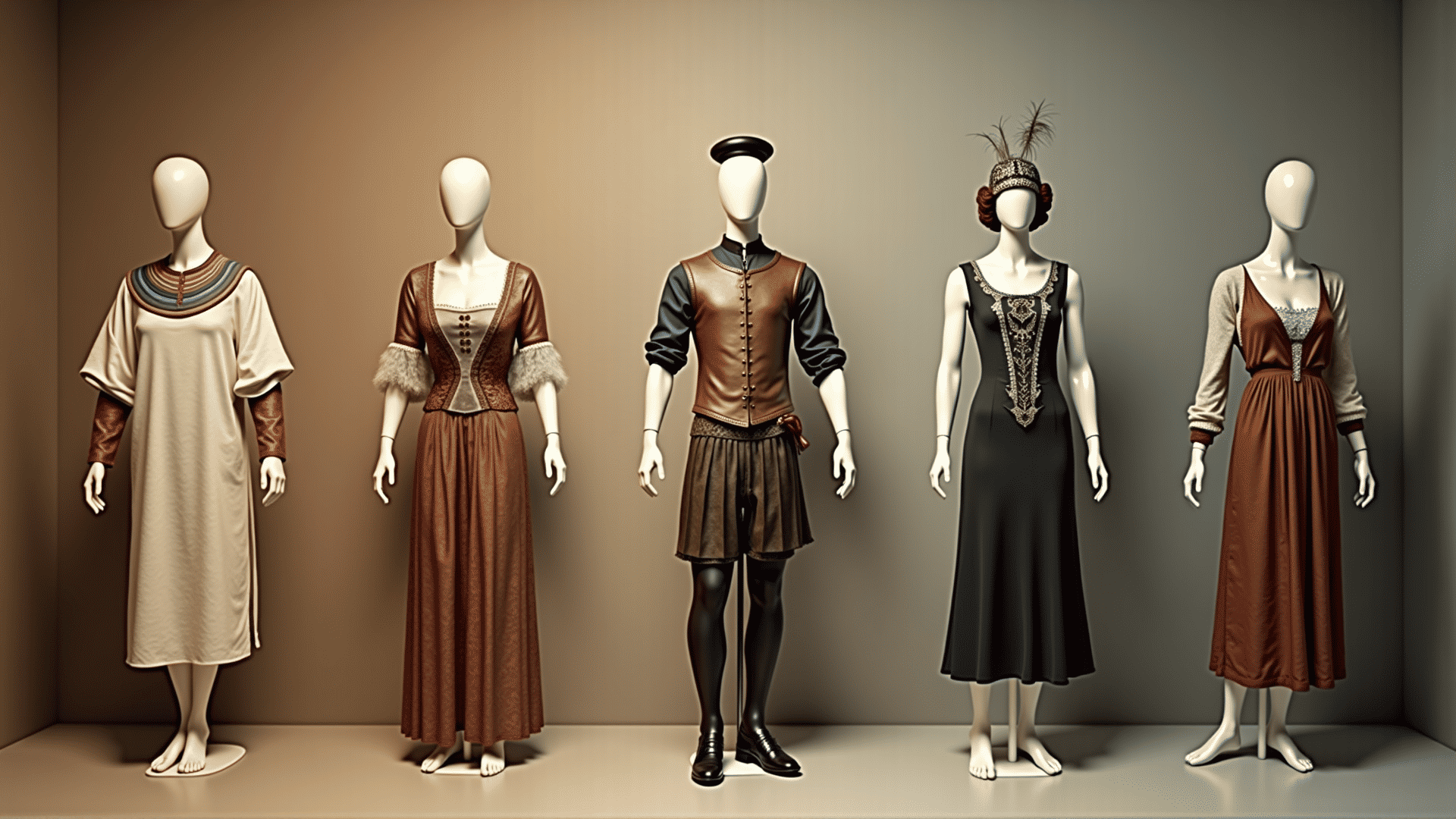Clothing has been a crucial part of human civilization, serving as a means of protection, expression, and cultural identification. From the earliest days of human history to modern times, the evolution of clothing exhibits profound transformations that mirror societal changes, technological advancements, and cultural exchanges.
Ancient Attire: From Function to Symbolism
In prehistoric times, clothing primarily served functional purposes. Early humans used leaves, animal skins, and natural fibers to shield themselves from environmental elements. These garments were basic and unrefined, shaped by necessity rather than aesthetics.
As civilizations emerged, clothing took on symbolic dimensions. In Ancient Egypt, linen was crafted into garments that reflected social rankings, with pharaohs adorned in elaborate costumes. Similarly, in Mesopotamia, woolen attires were common, and intricate designs signified status and occupation. The use of color, particularly purple dye derived from marine snails, often indicated nobility and wealth across various ancient societies, including the Romans and Byzantines.
Medieval and Renaissance Transformations
The Middle Ages saw clothing become more structured, with designs reflecting the hierarchical society and rigid class differences. Tunics and cloaks were popular across Europe, while the Byzantines continued to set trends with ornate robes and jewels. These styles were often mirrored in European courts, showcasing the influence of cross-cultural interactions.
With the Renaissance came a shift toward individuality and creativity in attire. The period was marked by vibrant textiles, intricate patterns, and an explosion of embellishments such as lace and embroidery. This era also introduced tailoring techniques that emphasized the human form, ushering in a more fitted and refined silhouette.
The Industrial Revolution and Mass Production
The Industrial Revolution brought significant changes to the textile industry, enabling clothing to be produced on a larger scale. The introduction of machines like the spinning jenny and the power loom revolutionized production processes, making garments more accessible to the general populace. This era democratized attire, breaking down some of the barriers between social classes.
Fashion trends became increasingly transient, with faster production allowing for a greater variety of styles. The 19th century also observed the emergence of department stores, which began to dictate trends and introduce the concept of seasonal wardrobes.
The 20th Century: Icons and Innovations
The 20th century was characterized by rapid changes in style and the emergence of iconic looks. Each decade introduced new silhouettes: the flapper dresses of the 1920s, the sharp suits of the 1940s, and the rebellious miniskirts of the 1960s are just a few examples. This period saw clothing become a canvas for political and social movements, with youth culture and subcultures using attire as a form of protest and identity.
Innovative materials such as polyester and nylon were developed, offering durability and ease of maintenance. The global travels and migrations of the 20th century further enriched the tapestry of fashion, blending Western styles with Asian, African, and Middle Eastern elements.
The Contemporary Scene: Sustainability and Technology
Today, clothing continues to evolve with an increased focus on sustainability and ethical production. The impact of clothing production on the environment has led to a push for eco-friendly materials, ethical labor practices, and innovative recycling methods.
Technological advancements are also paving the way for smart textiles incorporating electronics and digital elements, creating interactive garments that can adapt to the wearer's needs. The modern consumer seeks not only style but also a meaningful connection with their clothing, emphasizing personal expression and environmental consciousness.
In conclusion, clothing serves as a historical record, capturing the essence of each era's social, cultural, and technological landscapes. From ancient garbs to contemporary attire, the journey of clothing is a testament to humanity's ingenuity, adaptability, and desire for self-expression.
